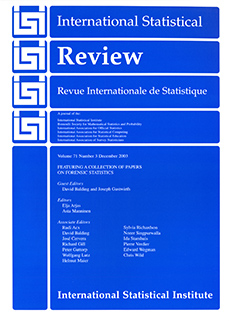Abstract
Although leptokurtosis is fairly common in macroeconomic time series, agreement over what non-normal distributions are plausible, is rare. The paper proposes a linear model that allows for trend versus difference stationarity and asymmetric behavior over the business cycle along with several distributional alternatives for the disturbance terms. It proposes computationally feasible Markov Chain Monte Carlo methods to perform Bayesian computations, applies the model to industrial production data of seven industrialized countries, and relies on prior predictive densities to compare models with Student-t, symmetric stable, EGARCH, exponential power family and finite-mixture-of-normals errors. The relationship between unit root inference, asymmetry and leptokurtosis is examined in detail using the exact, finite-sample posteriors corresponding to the different models.
Citation
Efthymios G. Tsionas. "Bayesian International Evidence on Heavy Tails, Non-Stationarity and Asymmetry over the Business Cycle." Internat. Statist. Rev. 71 (1) 151 - 168, April 2003.
Information




